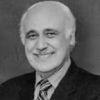Of Jinnah & Imran: 2 love stories, just 100 yrs apart

Exactly a hundred years ago, a wedding took place in Bombay (now Mumbai). It was Spartan in its simplicity, covert in its execution, and dramatic in its audacity.
On April 18, 1918, a beautiful young socialite — the only daughter of wealthy Parsi parents — converted to Islam to marry the love of her life. The following day, again without telling her parents, she left their palatial home and with nothing more than an umbrella and her faithful dog, she walked to the house of an affluent Muslim lawyer, whose house on Mount Pleasant Hill stood yards away from her former home. After a small, very private ceremony witnessed by strangers but not their families, Rattanbai Petit became Maryam Jinnah.
Their marriage, which lasted almost 11 years, more than defied convention at the time; it remained impervious to rational analysis. Biographers of the Jinnahs — from Hector Bolitho (1954) to Jaswant Singh (2009) — grappled with the conventional image of Ruttie — a beautiful, flighty, highly strung socialite still in her teens when she fell in love with a man 24 years her senior, and the lofty insularity of M.A. Jinnah — an established barrister with a flourishing practice, known for leading a rigorously disciplined life, in which human emotions had little place.
Since the Quaid’s death in 1948, despite the fact that Pakistanis eschew statues in public places, we have petrified the Quaid into our national monument. He has been fabricated by his followers into a two-dimensional billboard. Had the British biographer James Pope-Hennessy met M.A. Jinnah, he might have applied the same sharp description to him that he did after observing the Duchess of Windsor. “She is flat and angular,” Pope-Hennessy wrote, “and could have been designed for a mediaeval playing card.”
Sheela Reddy’s painstaking study Mr & Mrs Jinnah: The Marriage that Shook India (2017), has finally provided a newer generation of Pakistanis with an almost tangible holograph, in which they are able to see both the Jinnahs in the round. Her biography, like every good piece of sculpture, extracts significant form from a solid mass.
Her research began with her discovery of a cache of letters written by Ruttie to her friend and confidante Padmaja, the daughter of Congress freedom fighter and poetess Sarojini Naidu. Naidu had been one of his earliest admirers, lauding his “virile patriotism” and calling him in 1916 the “Ambassador of Hindu-Muslim Unity”.
It is clear Ruttie Jinnah never intended her private letters ever to be published. Had that been her aim, she might have been more circumspect in her outbursts. She wrote as she spoke, and she lived as she willed. She died on February 20, 1929, on her 29th birthday. One of her last letters to her husband contained this heartrending plaint: “Try and remember me beloved as the flower you plucked and not the flower you tread on.”
It must be admitted that by temperament, the Quaid was seen as an undemonstrative, often unfeeling man. How else can one explain his neglect of his bride on her first birthday after their marriage, or his forgetting their first wedding anniversary? Or the curt instruction he gave to his sister Fatima Jinnah to vacate his house when his bride Ruttie moved in?
Yet, the love he nurtured for Ruttie was deep, sincere and sustained. His grief at her funeral in February 1929 was not simulated, nor was the remorse he expressed when he stopped at her grave before leaving Mumbai for the last time in August 1947. As a politician, Jinnah grew stronger after political defeats; as a man, he never recovered from the failure of his marriage.
Now, a hundred years later, a modern Pakistani political leader has made a third marriage which can be described also as Spartan, covert, dramatic. After weeks of needless speculation, the Pakistan Tehreek-e-Insaf has admitted that its leader — the 66-year-old Imran Khan — has married his spiritual counsellor. She is a middle-aged lady whose husband obligingly divorced her so that she could marry Imran Khan. Apparently, she convinced him that their union would propel his political career into an upward trajectory. One wonders how future biographers and social historians will analyse this unusual union.
Mr Khan’s detractors are having a field day mocking his latest attempt to find a suitable spouse. That is not fair. As an individual, he is entitled to his privacy. As a politician, though, his every move, his every statement, his every commitment will be under scrutiny. If there is disappointment at the manner in which his latest nuptials were conducted, it is because the public had expected him to demonstrate his “virile patriotism” in a more discreet way.
Pakistan is already short of heroes. The few left are proving to be effigies sculpted in ice.
By arrangement with Dawn

